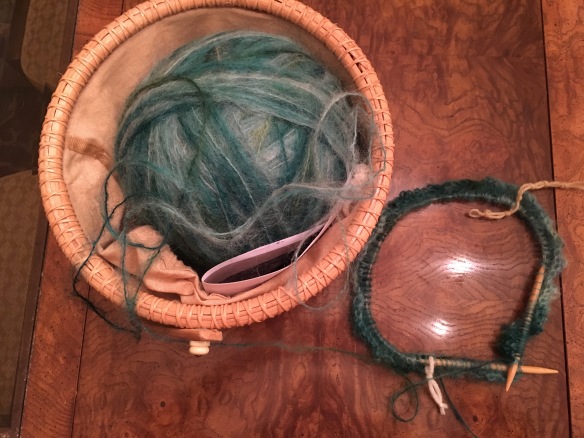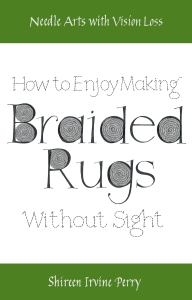While recently visiting Kilkenny, Ireland, I met Dee and Inma leading a creative crochet sculpture project. They are using similar materials with their group as I have done with my students- Using large crochet hooks and strips of fabric cut from knit t-shirts. Both are interested in what and how I teach. They asked, “How do you describe color to someone who can’t see?”
For those of you who have the same question, my descriptions below may be helpful for your communication of color.
Color Descriptions for the Visually Impaired
For a visually impaired or blind person, the best tool for communicating color is to describe color according to items in nature and in the world. This provides a point of reference and word associations for the differences in color.
Describing the Color Wheel
Imagine an orange you slice horizontally to see wedge shaped membrane lines making 12 segments. Each segment is a hue or a color. The lines are like spokes of a wheel. This illustrates how the color wheel appears. The outer-wider part of the wheel (toward the orange rind) is the brighter color. Gradually toward the center, color becomes dull or darker as the segments or spokes narrow.
The five basic colors are yellow, green, blue, purple or violet and red. The in-between colors are greenish-yellow, bluish-green, bluish-purple, reddish-purple, reddish-orange, and yellowish-orange.
Suggestions for describing colors:
Red-Purple: Hot pink, raspberry, bing cherry, garnet, bougainvillea, blackberry…
Red: Apple, rose, cranberry, cherry, poinsettia, fire engine, ruby, poppy, coral, shrimp, flamingo pink, tomato, strawberry, Garnet…
Red-Orange: Peach, brick, terracotta, persimmon, redwood, russet…
Orange: Carrot, pumpkin, beige, cinnamon, sienna, chocolate…
Yellow-Orange: Marigold, squash, rust, zinnia, camel, beige, champagne…
Yellow: Canary, lemon, gold, straw, cream, grapefruit, sulfur, wheat, flax, daffodil…
Yellow-Green: Celery, bamboo, lime, lettuce, parakeet, wintergreen, artichoke, olive, khaki, moss, parsley…
Green: Emerald, spinach, mint, grass, holly, jade, forest green, pinegreen, Kelly green, cypress green…
Blue-Green: Turquoise, teal blue, mallard’s feathers, peacock…
Blue: Sky blue, lapis, water, robin’s egg, for-get-me-not, bachelor button, delft, blue jay, blue diamond…
Blue-purple: Indigo, sky blue, royal blue, iris, sapphire, periwinkle, Wedgwood, lavender, blueberry, navy, larkspur…
Purple: Violet, lilac, blackberry, eggplant, prune, lavender, amethyst, wisteria…
May your world of color be enhanced with this communication tool!




